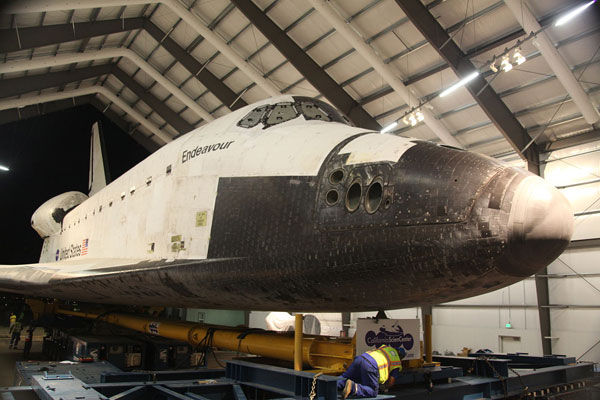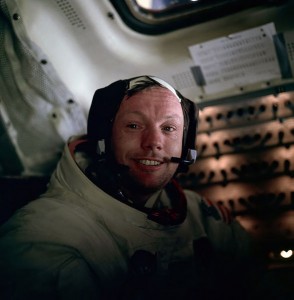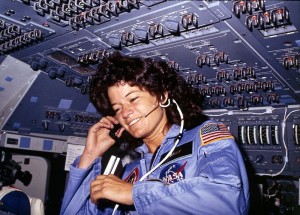Space Exploration and the End of an Era: Notable Deaths in 2012
Neil Armstrong, Sally Ride, Roger Boisjoly and the shuttle program form this year’s late greats of space exploration
![]()

Space shuttle Endeavour at its new location in the California Science Center. Image via Wikimedia Commons
The year is almost over and media outlets across the country are reflecting on the news makers of the past 365 days and the celebrated and notorious who passed away in 2012. Their compilations show that a handful of late greats of space exploration will not be with us in 2013.
2012 witnessed the passing of two legends in human space exploration: Neil Armstrong and Sally Ride. Armstrong, who died on August 25 from complications following heart bypass surgery, made history when stepped off the Apollo 11 spacecraft and onto lunar soil on June 29, 1960. The commander of the mission, Armstrong and his “small step for man” but “giant leap for mankind” inspired a nation slogging through the Cold War–millions of people turned on the TV to watch his moonwalk live and to witness what humanity can accomplish with dedicated investment in science. Armstrong has been the subject of several books, the namesake of elementary schools, and the inspiration for a 1969 folk song. A lunar crater near the Apollo 11 landing site is named after him, as is an asteroid. But perhaps his most lasting legacy will be his footprints on the moon, which without any weather to disturb them may last for thousands of years, giving mute encouragement to future generations that efforts to explore our solar system can meet with success.
Sally Ride, the first American woman in space, died July 23 after a long battle with pancreatic cancer. An astrophysicist with a doctorate degree from Stanford, Ride flew first on a Challenger mission in 1983; at 35 years old at the time of her flight, she is the youngest American to have ventured to space. When she flew in a second Challenger mission in 1984, she became the only American woman to fly into space twice. Her career made her household name and, after enduring a continual skepticism on whether a woman should be an astronaut, she became a role-model for women who sought entrance into male-dominated fields.
Six months before the space shuttle Challenger exploded on January 28, 1986, Roger Boisjoly warned that cold weather could disrupt the seals connecting the solid rocket booster together. “The result could be a catastrophe of the highest order, loss of human life,” Boisjoly, a mechanical engineer and fluid dynamicist wrote in a memo to Morton Thiokol, his employer and the manufacturer of the boosters. Later investigations showed that Boisjoly’s recommendations became mired in corporate bureaucracy. Below-freezing temperatures the night before the launch prompted Biosjoly and others to plead to their bosses that the flight be postponed. Their advice went unheeded, and 73 seconds after launch, Challenger exploded, killing all seven crew members. Boisjoly was called as a witness by a presidential commission that reviewed the disaster, but was later shunned by colleagues for being a whistle-blower. He then became an advocate for workplace ethics and was given the Award for Scientific Freedom and Responsibility by the AAAS. He died January 6 of cancer in his colon, kidneys, and liver.
The shuttle program itself reached the end of its lifetime in 2012. On Oct 14, Endeavour made its last trek–through the streets of Los Angeles–to its final home at the California Science Center. Atlantis was moved to the Kennedy Space Center’s tourist exhibits on November 2, and Enterprise was delivered to the U.S.S. Intrepid, docked off Manhattan’s West Side, this June. Discovery arrived at Smithsonain’s Udvar-Hazy Center on April 19.
/https://tf-cmsv2-smithsonianmag-media.s3.amazonaws.com/accounts/headshot/mohi-kumar-240.jpg)


/https://tf-cmsv2-smithsonianmag-media.s3.amazonaws.com/accounts/headshot/mohi-kumar-240.jpg)